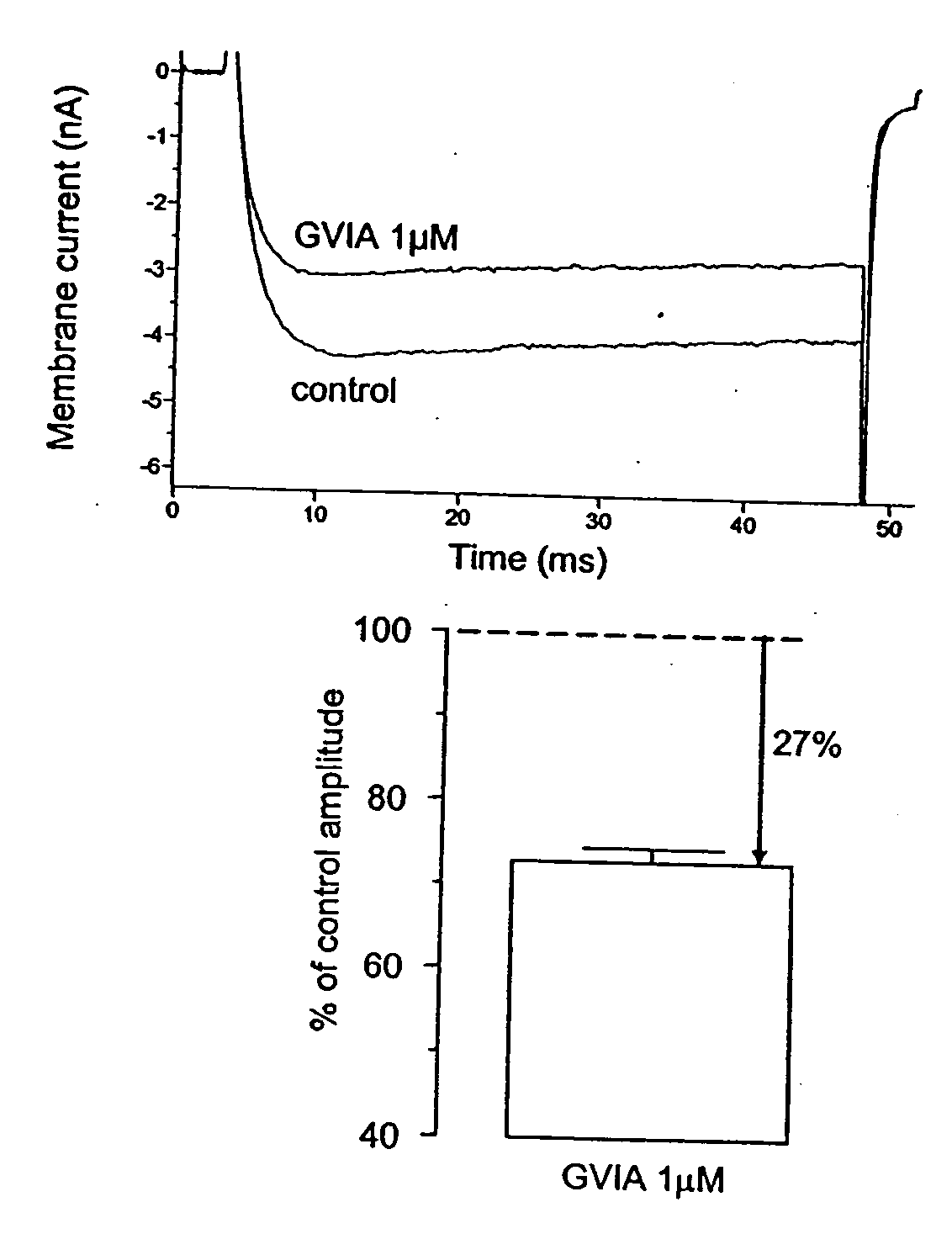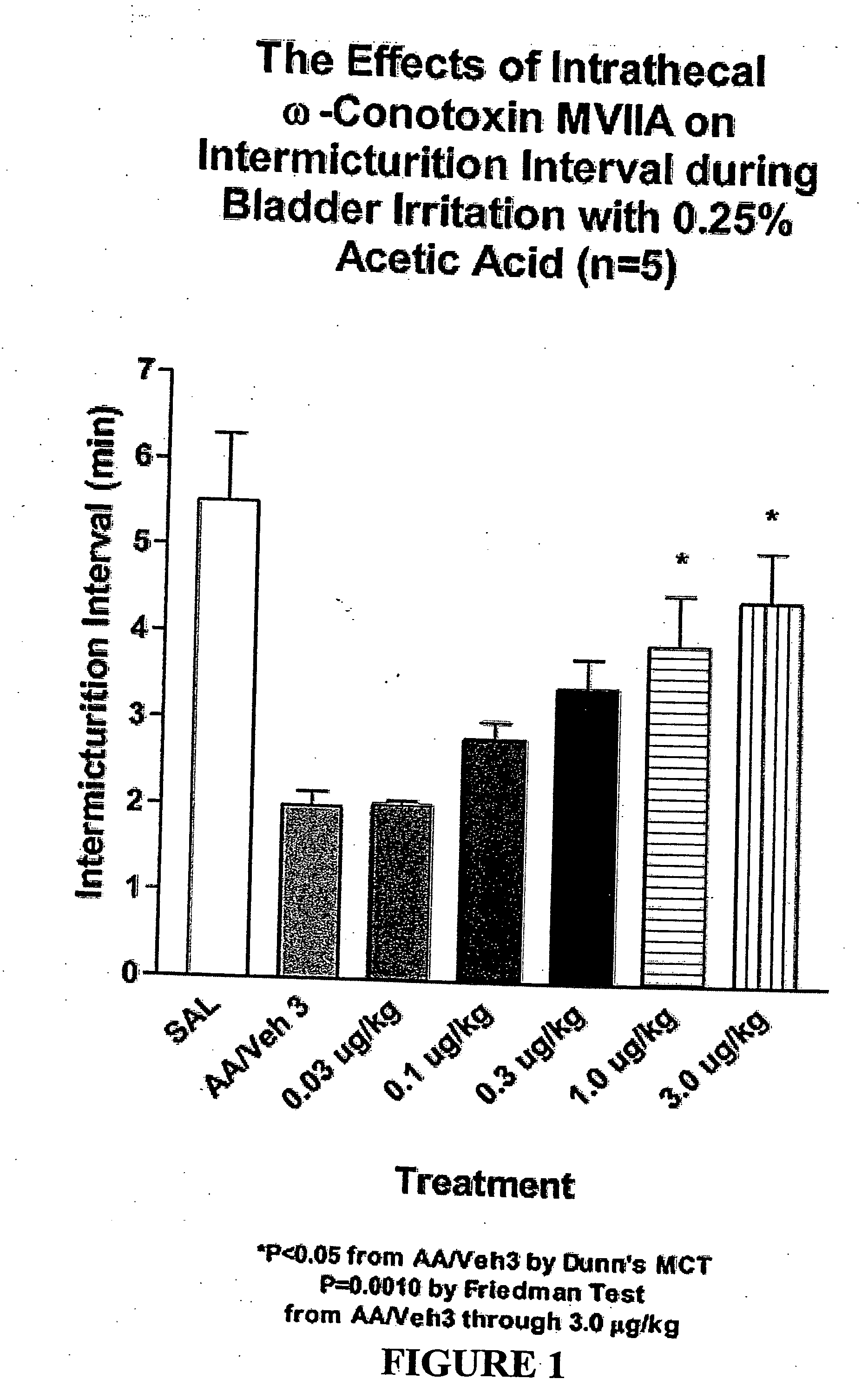Methods of using ziconotide to treat overactive bladder
a technology of ziconotide and overactive bladder, which is applied in the field of cav2 . 2 subunit calcium channel modulator, can solve the problems of limited efficacy, dry mouth, and difficulty for some individuals to tolera
- Summary
- Abstract
- Description
- Claims
- Application Information
AI Technical Summary
Benefits of technology
Problems solved by technology
Method used
Image
Examples
example 1
Dilute Acetic Acid Model
[0190] Objective and Rationale
[0191] The objective of the current study was to determine the ability of Cav2.2 subunit calcium channel modulators to reverse the reduction in bladder capacity and shortening of intermicturition interval seen following continuous infusion of dilute acetic acid, a commonly used model of lower urinary tract disorders.
[0192] Materials and Methods
[0193] Animal Preparation: Female Sprague-Dawley rats (Charles River, 250-300 g, n=5) were anesthetized with urethane (1.2 g / kg) and an intrathecal catheter (PE10) filled with artificial cerebrospinal fluid (aCSF) was inserted through a small incision in the atlanto-occipital membrane and the tip was positioned at the sacral spinal cord (8.5 cm from insertion). The intrathecal catheter was fixed in place and the overlying skin closed with tissue adhesive. A PE50 catheter with a fire-flared tip was inserted into the dome of the bladder through a small cystotomy and secured by ligation fo...
example 2
Bladder Sensory Neuron Calcium Channel Current Model
[0200] Objective and Rationale
[0201] The objective of the current study was to determine the effect of Cav2.2 subunit calcium channel modulators on the ability to modulate calcium currents in bladder primary afferent neurons, a commonly used model of lower urinary tract disorders.
[0202] Methods
[0203] Labeling of bladder afferent neurons: Experiments were performed on adult female Sprague-Dawley rats (175-200 g). DRG neurons innervating the urinary bladder were labeled by retrograde axonal transport of the fluorescent dye, Fast Blue (FB) (2% w / v), 12-16 days prior to dissociation. FB dye was injected into the bladder wall of anesthetized animals with a 32 gauge needle at one to three sites around the bladder neck (1-5 μl per site, total volume of 5 μl). The bladder exterior surface was rinsed thoroughly with sterile saline following injections to minimize dye contamination of surrounding tissue.
[0204] Neuronal cultures: L6 and ...
PUM
| Property | Measurement | Unit |
|---|---|---|
| time | aaaaa | aaaaa |
| time | aaaaa | aaaaa |
| time | aaaaa | aaaaa |
Abstract
Description
Claims
Application Information
 Login to View More
Login to View More - R&D
- Intellectual Property
- Life Sciences
- Materials
- Tech Scout
- Unparalleled Data Quality
- Higher Quality Content
- 60% Fewer Hallucinations
Browse by: Latest US Patents, China's latest patents, Technical Efficacy Thesaurus, Application Domain, Technology Topic, Popular Technical Reports.
© 2025 PatSnap. All rights reserved.Legal|Privacy policy|Modern Slavery Act Transparency Statement|Sitemap|About US| Contact US: help@patsnap.com



